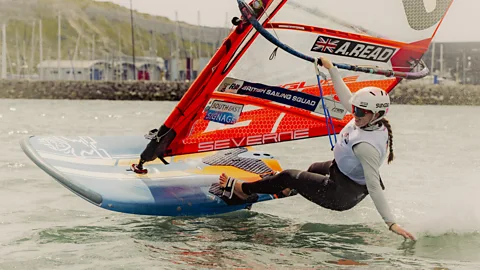 Max Miechowski
Max MiechowskiBritish windsurfers, sailors and rowers have been helping in the fight against invasive species – showing big sporting events like the Olympics can leave a legacy of biodiversity.
From - BBC News
By - Katherine Latham
Edited by - Amal Udawatta
Pumping the sail to gain speed, windsurfer Alice Read lifts out of the water and glides across the sparkling blue of Portland Harbour. The only sounds are the wind and the quiet buzz of her hydrofoil. When she turns, I barely notice her crossing the board, her movements fluid as the water itself. She reaches for the surface with the fingertips of one hand, spray fizzing into the air as she swoops past. She is so close she could touch the boat I'm sitting in. Effortlessly, Read comes to a stop, resting for a moment to catch her breath.
"On the water, I'm just having so much fun – it's only when I come off the water I realise actually how much work I've done," she says.
Under the rings of the Olympic flag, the atmosphere at the Weymouth and Portland National Sailing Academy, home to the British Sailing Team, is electric. Groups of children, too, are out on the water, shouting and laughing as they row in teams, while mini-windsurfers wobble about in the shallows. On the shore, sailing boats line the water's edge, their rigging jingling in the wind as if champing at the bit.
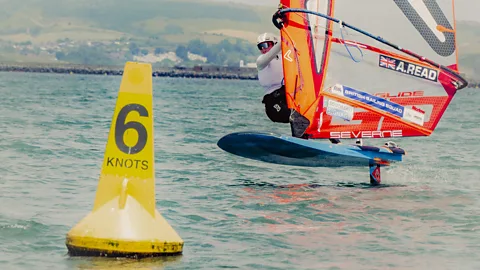 Max Miechowski
Max MiechowskiAs it stands, Team GB tops the all-time Olympic sailing medal table, having won more medals than any other nation. And today, without doubt there is an atmosphere of excitement, energy – and an unmistakable passion for the water.
But many of them are also deeply aware that beneath the waves, our waterbodies are in trouble. Aliens are creeping across oceans, up rivers, and along streams and canals. Invasive non-native species are thriving, often outcompeting native ones, and have been identified as one of the top drivers of global biodiversity loss. Olympic sailors, windsurfers and rowers are now helping in the fight against this destructive flora and fauna.
One of Read's earliest memories is of sitting on the bow of her dad's board as he windsurfed full pelt across an Oxford reservoir near where she grew up. "It's something else. It's such a great feeling," says Read. "There's something about being able to work with [the elements]. It's just you, the water and the wind."
Today, she windsurfs all over the globe but Portland is where she calls home – and where she is currently training for the 2028 Olympics.
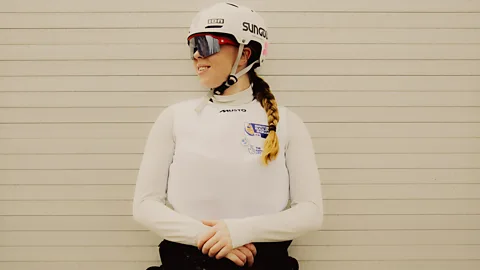 Max Miechowski
Max MiechowskiRead's training regime is intense. Six days a week she works on her speed and manoeuvres. "We're always trying to go as fast as we can – in every direction – upwind, downwind, on a reach," she says. "We do something called tuning runs where we go for a few hours in a straight line, adjusting equipment to go faster. In manoeuvres sessions, [we do] jibe attacks. With a sport that's so fast now in the water, if you mess up a jibe, it's pretty costly."
But it's not just what's on top of the water that matters to Read. A few years ago, she left the windsurfing scene to study for a degree in ocean science and marine conservation at the University of Plymouth, which she completed in 2021. Today she is an ambassador for The Green Blue, a programme created by the Royal Yachting Association (RYA) and British Marine to promote sustainable boating.
Invasive species can be a particular concern in ports and harbours due to the movement of a large number of boats, as well as the sheltered environments they provide. In Weymouth Harbour alone, 18 different non-native species were found in 2023. These include Japanese kelp which grows quickly on hard surfaces such jetties and moorings, outcompeting native kelp; slipper limpets which settle in wave-protected areas like marinas where they smother other seabed species and consume planktonic larvae; and trumpet tubeworms which gather in huge numbers to form large reef-like structures. But, says Read, by carrying out a simple "clean, check, dry" procedure we can minimise the introduction and spread of such invasive species.
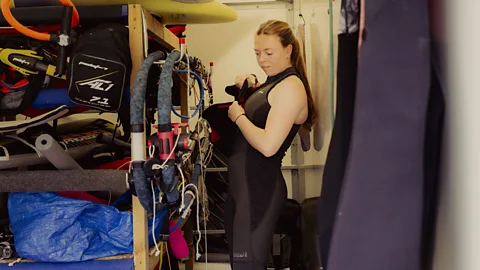 Max Miechowski
Max Miechowski"When it comes to travel, I'm aware of invasive species and if there are signs I take extra care," she says. "After every session, [it's important to] wash down the gear completely with a hose – everything. I would like to hope that if I'm travelling from one place to another, that there's actually nothing on my gear."
According to a 2024 report from the Intergovernmental Science-Policy Platform on Biodiversity and Ecosystem Services (IPBES), invasive non-native species pose a severe threat to people and nature in all regions on Earth.
More than 37,000 alien species that we know of have been introduced to new areas to date due to human activities. Of these, about 6% of alien plants, 22% of alien invertebrates, 14% of alien vertebrates, and 11% of alien microbes are known to be invasive. Invasive species alter habitats, disrupt food chains, damage livelihoods and spread diseases – and have been a major factor in 60%, and the only driver in 16%, of global animal and plant extinctions.
Most negative impacts are felt on land, but it is an aquatic species – water hyacinth – which is the world's most widespread invasive alien. As the global economy grows, changes in land- and sea-use accelerate, and climate change intensifies, the number of invasive species is now "rising at unprecedented rates".
But the authors of the IPBES report also highlight that prevention measures, such as strict border biosecurity and import controls, can prevent future biological invasions, and – while prevention is the best option – eradication and containment can control invasive non-native species already present, they said.
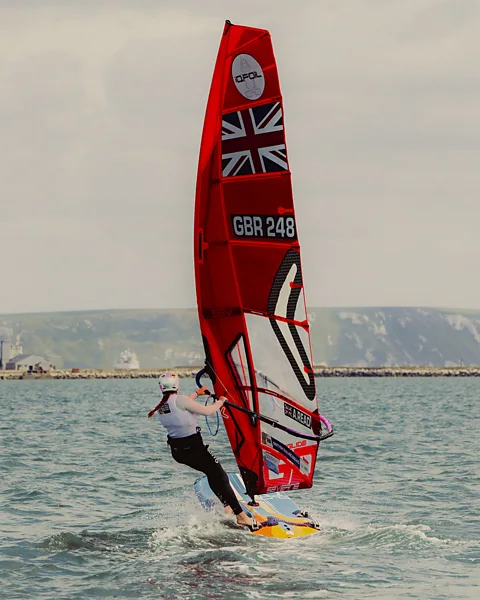 Max Miechowski
Max MiechowskiThe upcoming Olympics also bring opportunity, says Phil Horton, RYA's sustainability manager. Sporting events which attract large audiences can put a spotlight on issues like that of invasive species – and its stars can act as role models, setting a good example of how we can all help to protect our waters.
"Environmental best practice is absolutely critical because these are people who are held in high regard by the public," he says. "At the elite end of the sport, people keep all their equipment clean anyway. That's partly for invasive species control, but also because they want to make sure the equipment is absolutely in top condition for performing."
Water sports have become increasingly popular in recent years. The Watersports Participation Survey revealed 13.2 million UK adults tried a boating activity in 2022, up 3% from 2021, with paddle sports such as stand up paddleboarding and kayaking seeing the biggest growth. In the US, meanwhile, 16% of the population – that's over 53 million people – participated in water sports in 2023, a 1.3% increase compared to the previous year.
A greater number of boats, boards and infrastructure means risking increased levels of alien aquatic species being introduced. But at the same time, it's been shown that spending time in or near water has important benefits for human health.
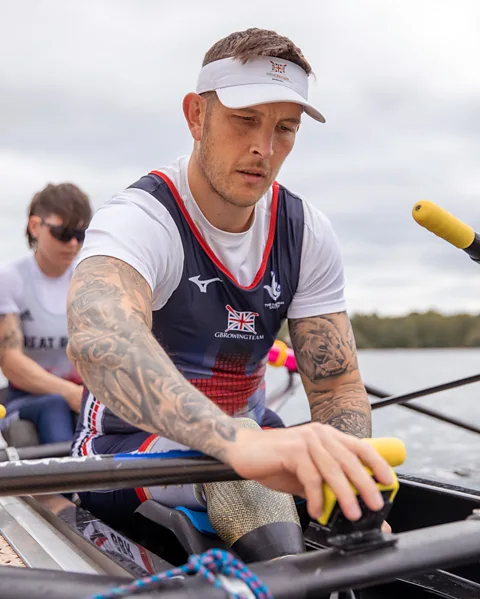 British Rowing
British RowingParalympian rower Gregg Stevenson and his partner Lauren Rowles are in the midst of training, spending up to three times a day, six days a week out on the water in readiness for the 2024 Paris Paralympics.
For Stevenson, being on the water can be a "spiritual" experience. "Especially on our longer training sessions, we tend to be up early in the morning," he says. "Sometimes, the Sun's rising. It's raining, snowing, or sunny. When it's windy, it takes a higher skill level. But that's what I love about it. You have to deal with the weather or the situation that's in front of you. That's the challenge, and that's what I enjoy."
Stevenson served as a Royal Engineer Commando before suffering an injury in 2009, which led to a double leg amputation. "Having an acquired disability, it was really difficult to find a sport that suited me," he says. "So, when I [discovered] rowing it was perfect. It gave me back the things I used to enjoy. I was back outdoors, and I was able to push myself. I was able to be physically active."
Stevenson's own experience inspired him to help others. Having recently completed a master's in psychology, he now works as a mental health practitioner for veterans.
"I'm so excited about the benefits of being around water for mental health," he says. "I think anybody who's been around water knows that [it does help] people feel better – self-esteem, general mood, how we deal with stress – all these things which are incredibly important in daily life."
But in recent years, Stevenson has noticed this environment he values so highly is changing. The rivers and canals, he says, are becoming "choked" with greenery.
While many invasive species may be difficult to detect – eggs or larvae, for example – "[after] some sessions you come up from the water, and it's obvious that your boat needs to be cleaned", says Stevenson. Invasive plants like floating pennywort or animals like quagga mussels can attach to boats and are easy to spot. "The athlete takes responsibility – so after every session we clean the bow, we clean out all the handles, you know. We make sure the boats and equipment are clean."
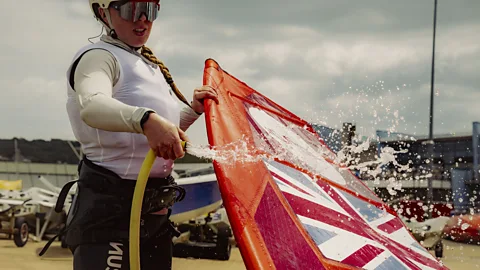 Max Miechowski
Max MiechowskiStevenson does this thinking of future generations. "I've got two children and I want them to be able to experience what I've experienced – outdoor swimming, not being scared of entering our waterways. It is sad to see there may be more limited opportunities," he says.
Being on the water, Stevenson adds, has taught him a lot about his own resilience. "We need these spaces – to have fun and be with nature." Everyone, he says, can take responsibility for the future of our waterways.
More like this:
• The UK's rivers are riddled with sewage pollution – new wetlands could help clean them up
The Olympics themselves have also, in some cases, helped to boost fragile environments and deter invasive species.
Tom Bellamy is the Royal Society for Protection of Birds' biodiversity manager for Queen Elizabeth Olympic Park in London. He says the huge injection of cash from the 2012 London Olympics allowed them to transform the site from what was a derelict industrial wasteland with contaminated land, invasive species and degraded waterways – into an urban "oasis" of biodiversity.
"We had two soil hospitals on the park," says Bellamy. The team dug up soil across the park to a depth of two or three metres (6.6 to 10ft), and picked it over by hand to remove any rubbish as well as invasive species such as Japanese knotweed. "Then the soil was washed and cleaned in giant washing machines," says Bellamy.
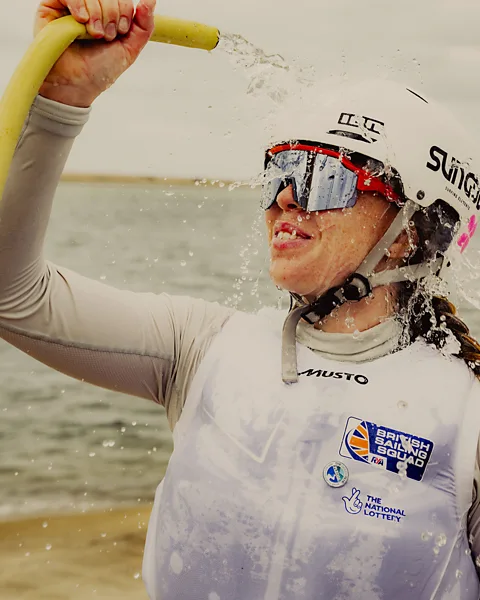 Max Miechowski
Max MiechowskiThe waterway restoration was a major part of the project. Over 300,000 native wetland plants were introduced to create wetland habitats which, today, are home to smooth newts, European eels, a variety of bats and birds including reed warblers, water rails and sand martins. "The waterways here support a great wealth of species," says Bellamy. "There is life tucked away in all the corners."
Back in Portland, Read hopes to leave her own legacy – by protecting the waters of Portland Harbour from invasive species, so the children we see here today can enjoy it for many years to come.
Read hauls her sail back onto land. This is a challenge in itself. It's huge and heavy, and the wind is strong as she carries over her head. She lays it on the concrete, ready to be cleaned. With a hose, she makes sure she sprays the water into all the nooks and crannies. She cleans the board, then she cleans herself – her helmet, life jacket, straps and buckles.
The "check, clean, dry" process only takes around five minutes and has been found to effectively control invasive non-native species. A small price to pay, says Read, for the pleasure of being out on the water.
"The water is a dynamic, changing environment," says Read. "Every day you learn something new, you've got the challenge of something new. It's a moment to be free, to be with nature."
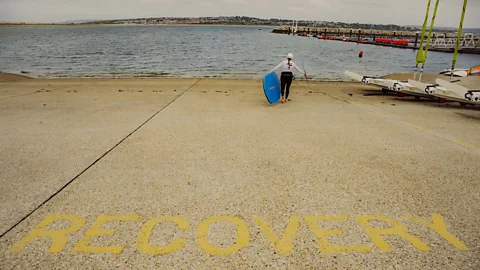 Max Miechoswki
Max Miechoswki--
Comments
Post a Comment